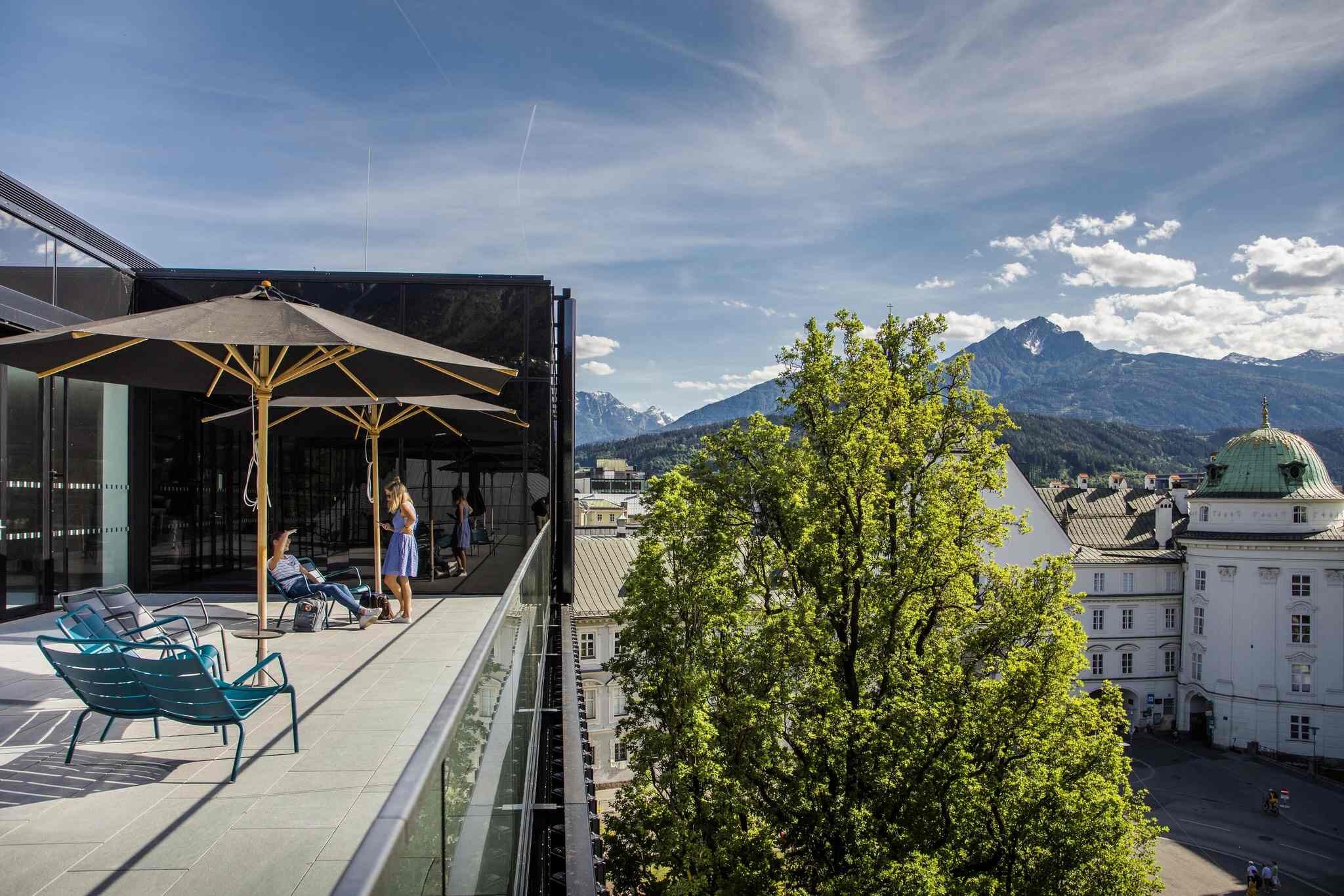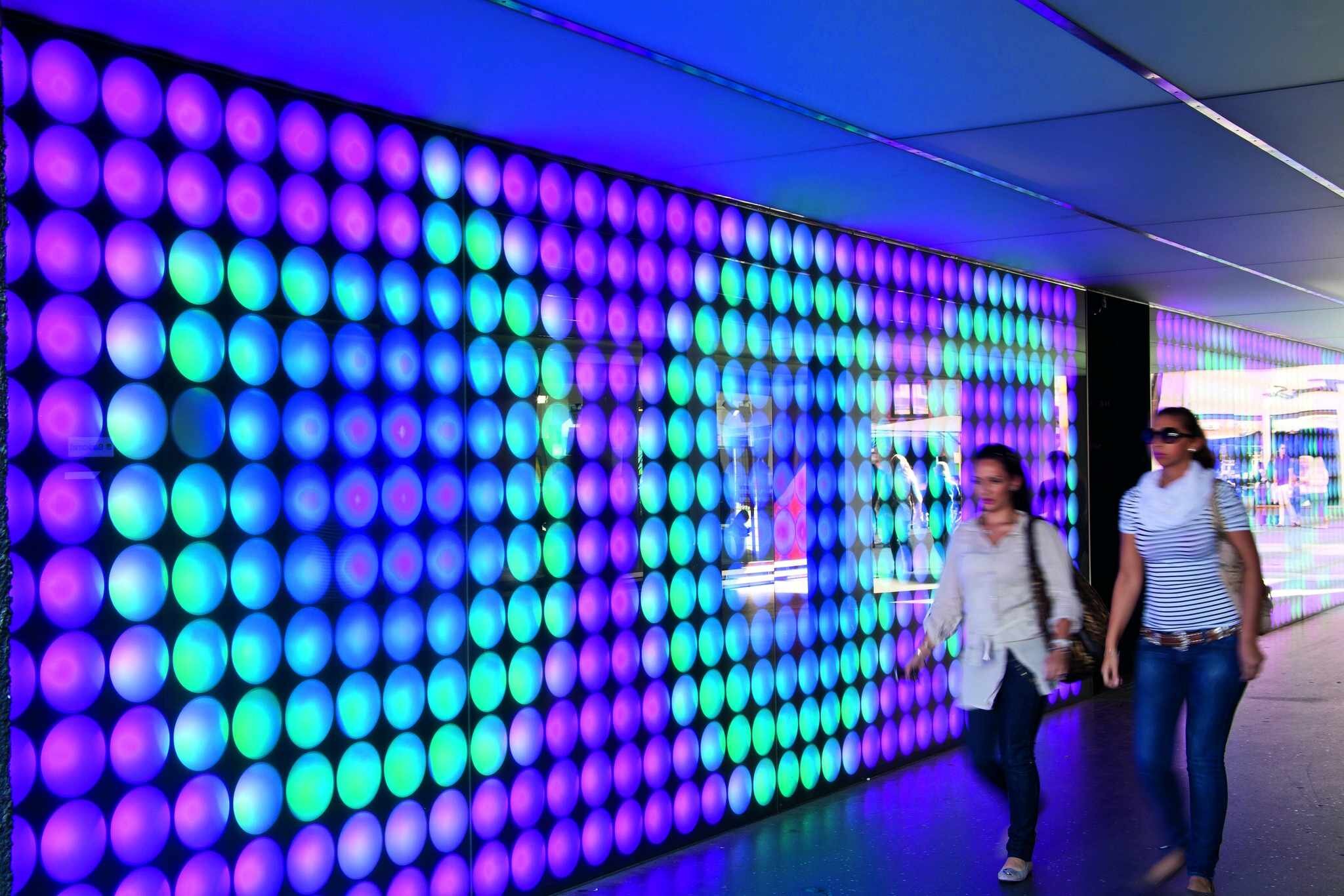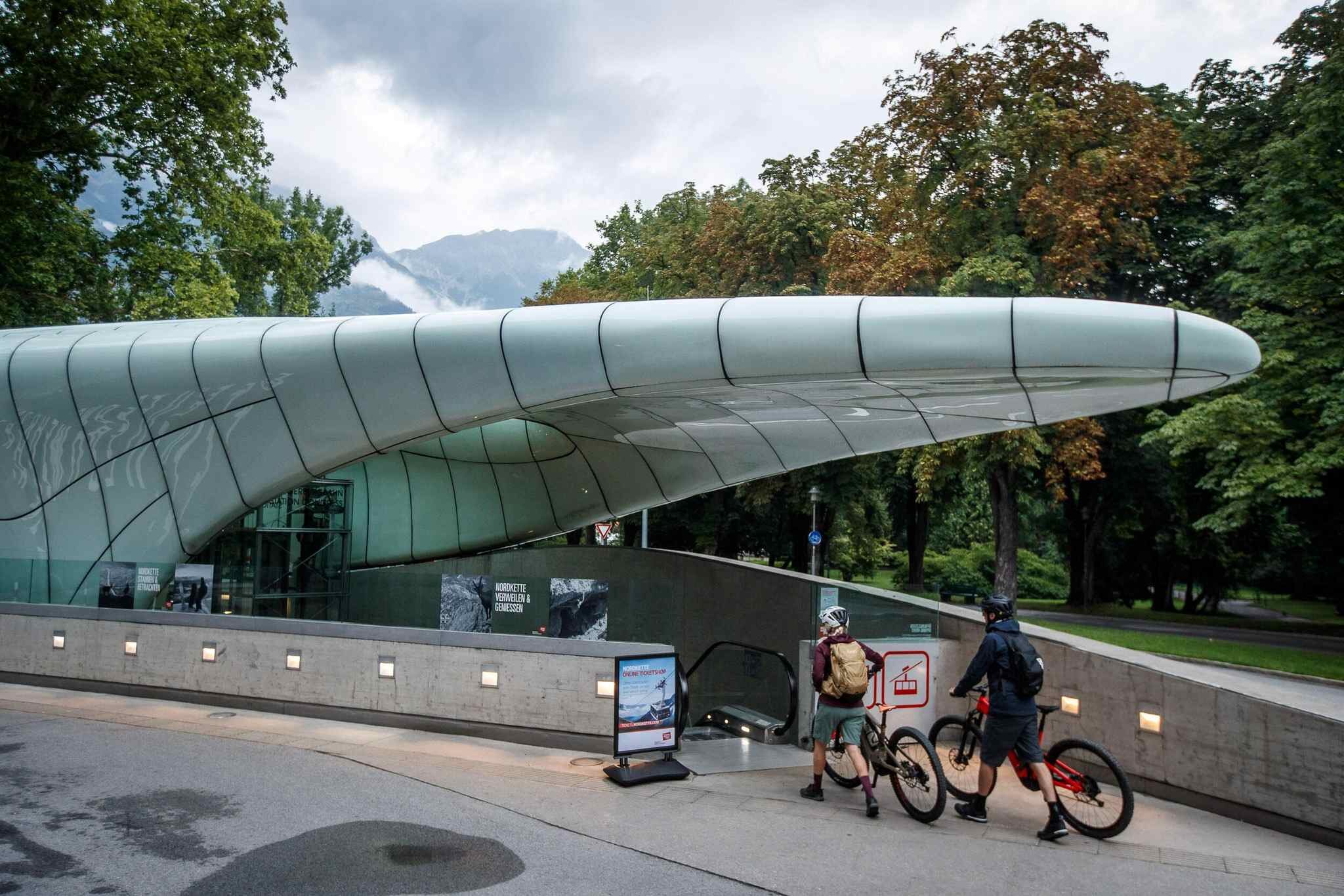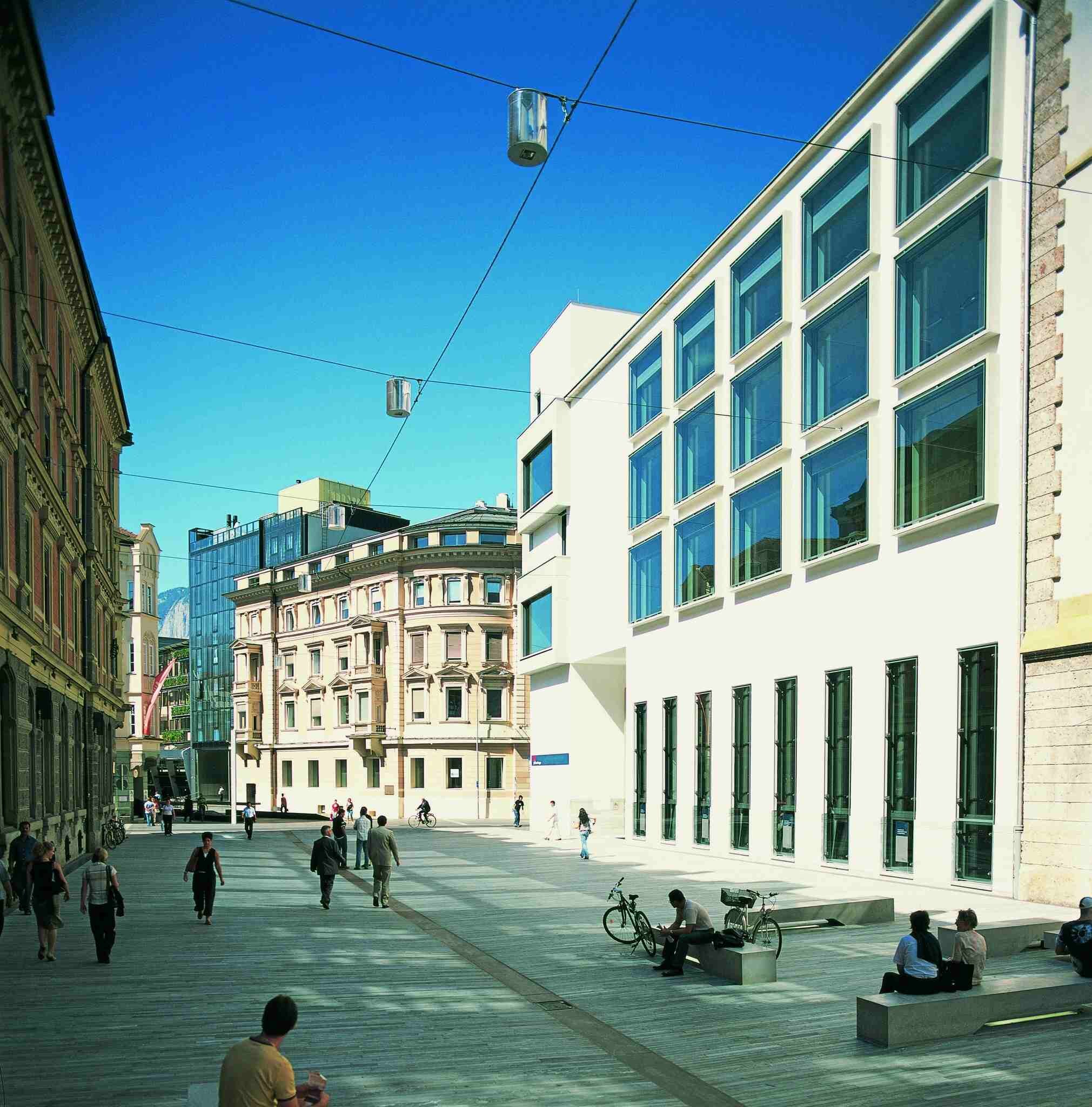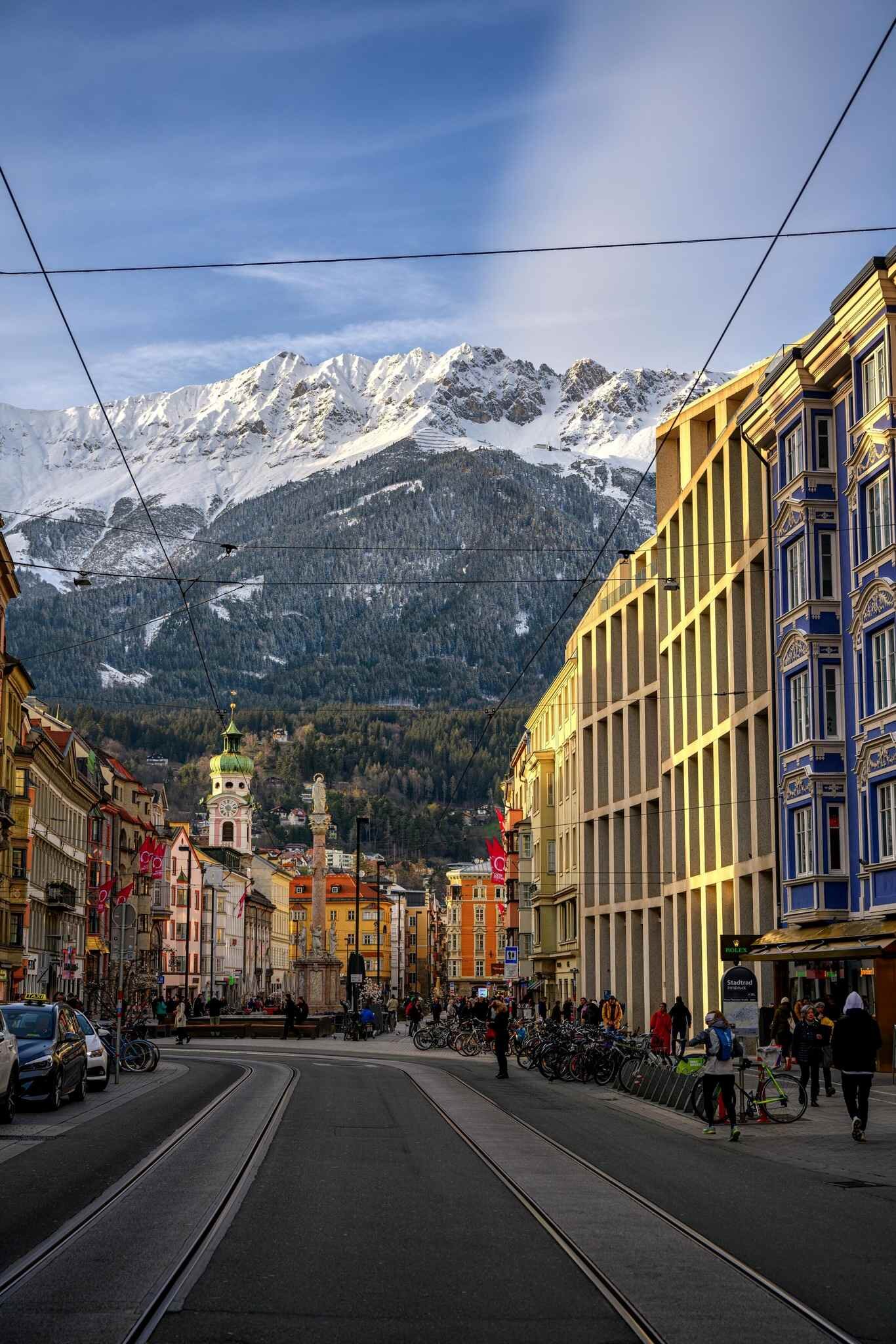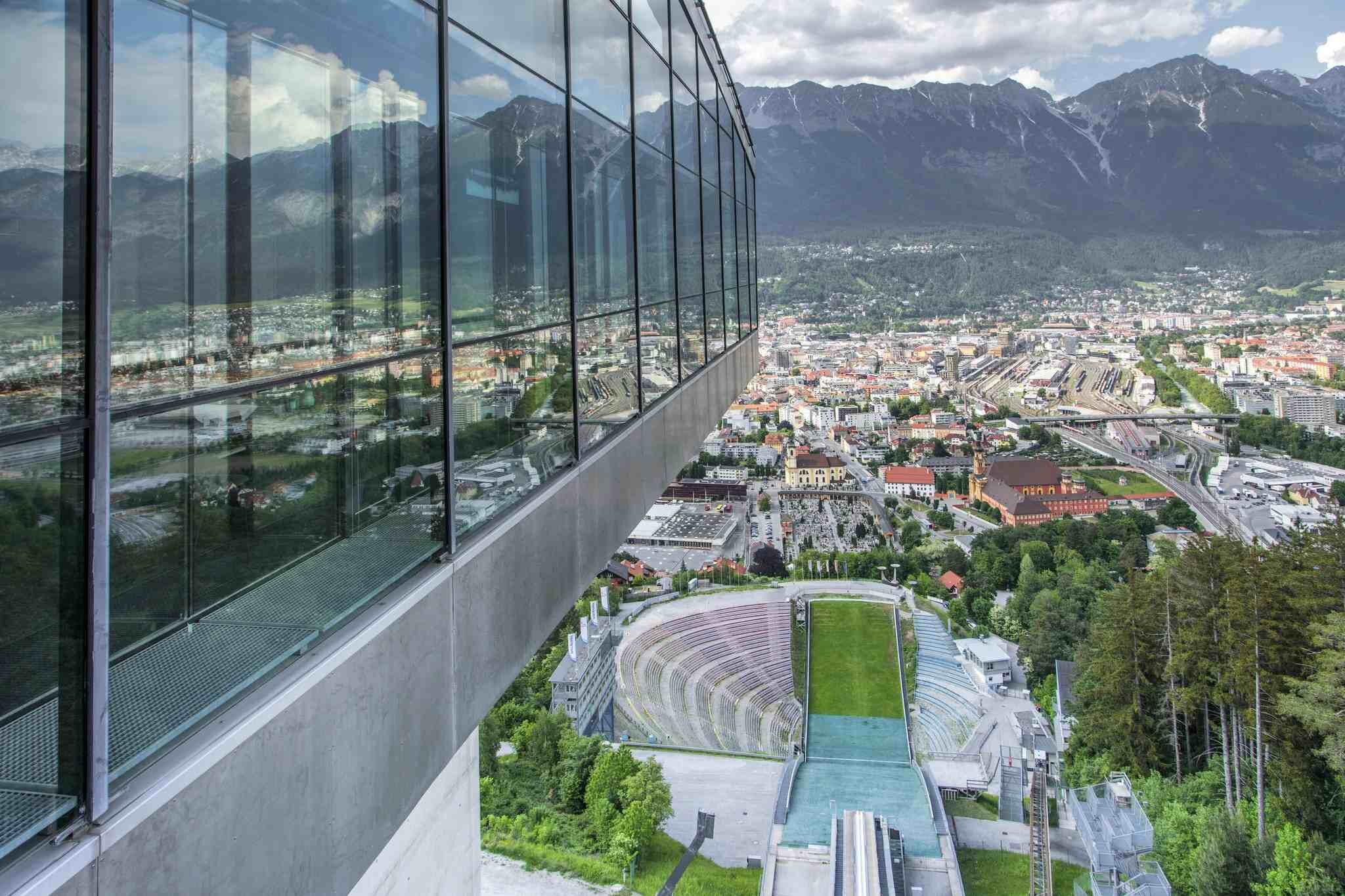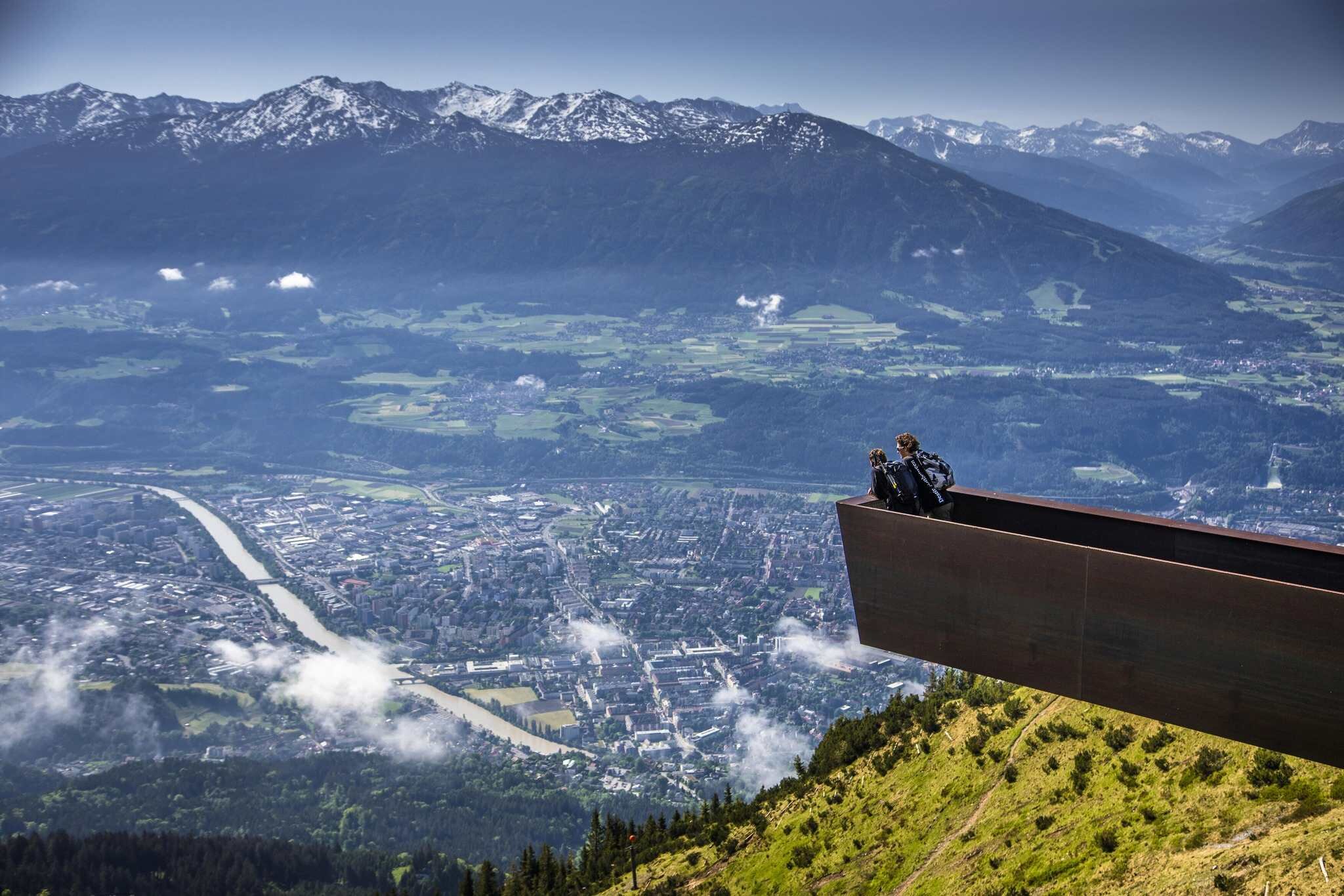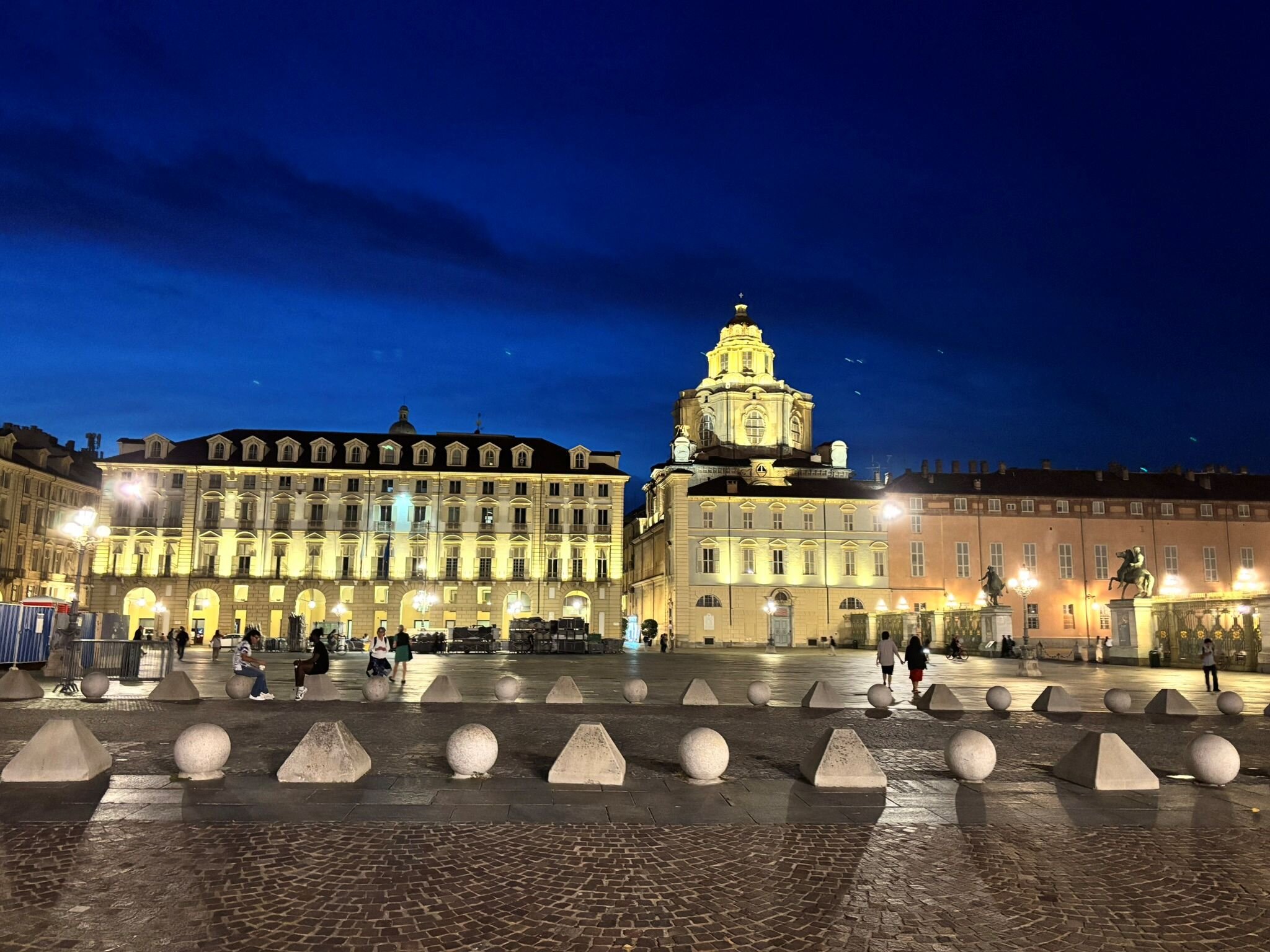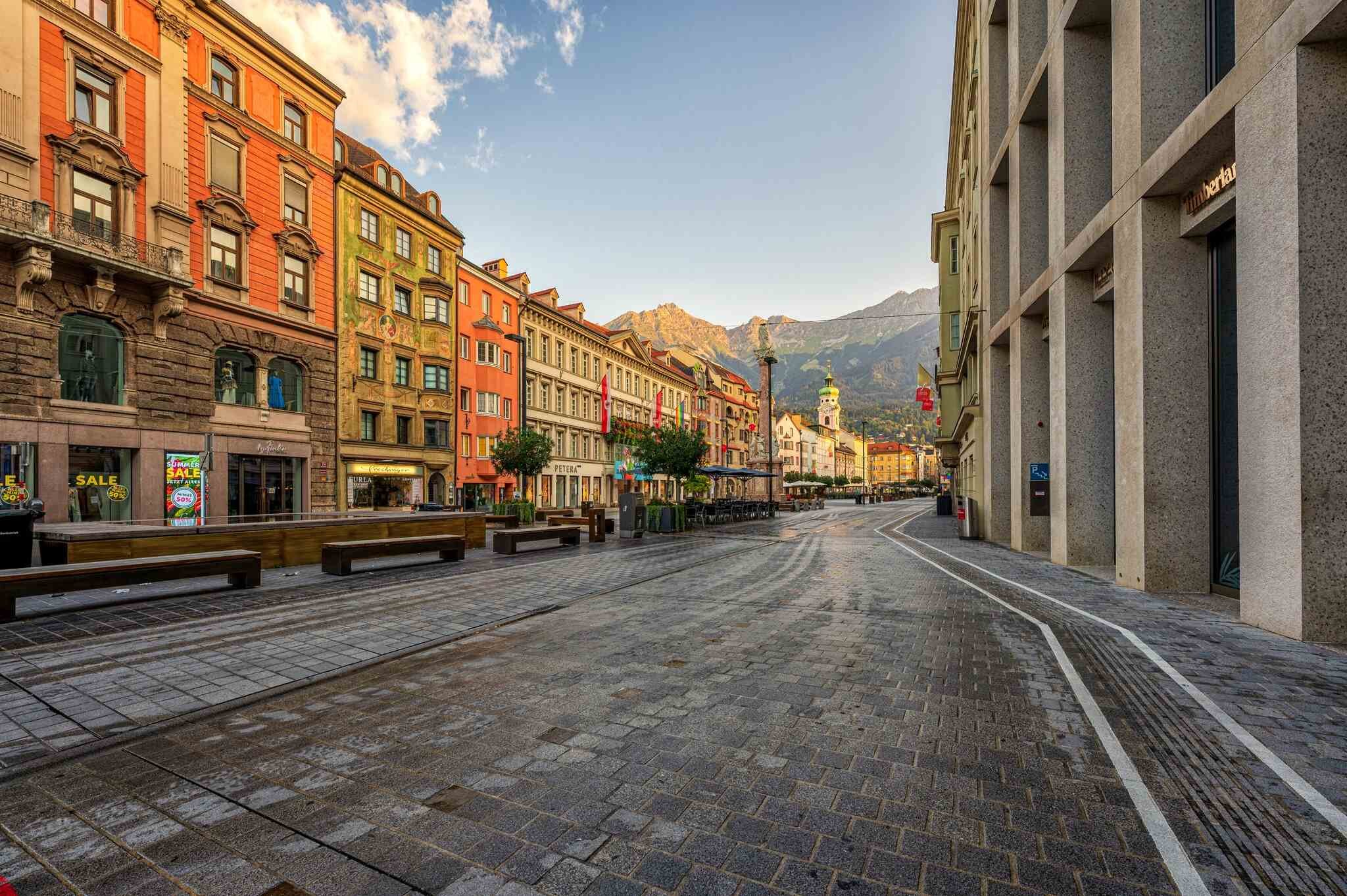
C'è un modo inaspettato di conoscere Innsbruck, al di là dei palazzi imperiali e delle piste da sci: basta alzare lo sguardo. Tra le vette che abbracciano la capitale del Tirolo, l’architettura contemporanea si è fatta strada in silenzio, trasformando la città in un laboratorio a cielo aperto, dove il dialogo tra paesaggio, storia e futuro prende forma concreta.
Innsbruck non rinuncia al suo cuore mitteleuropeo, ma lo contamina con una visione coraggiosa e sperimentale. Un esempio eloquente? Il trampolino di Bergisel. Progettato da Zaha Hadid e inaugurato nel 2002, è molto più di un impianto sportivo: è una scultura urbana, una linea affilata che svetta come un cobra tra le Alpi, ospitando una caffetteria panoramica da cui si domina l’intera valle. Poco lontano, le stazioni della funicolare Hungerburgbahn – sempre firmate Hadid – sembrano venute giù da un altro pianeta: leggere, fluide, ispirate ai ghiacciai e perfettamente integrate con il paesaggio alpino.
Il centro storico, invece, accoglie la contemporaneità con discrezione e intelligenza. Le Rathausgalerien di Dominique Perrault (dove trovare negozi, ristoranti e persino un bar con vista a 360°) sono un esercizio di equilibrio tra vetro, luce e memoria urbana. Il vicino Kaufhaus Tyrol, progettato da David Chipperfield, porta la firma sobria dell’architetto britannico: facciata in cemento bianco, inserti in marmo, interni luminosi e armonici come una cattedrale del consumo.
Innsbruck sorprende anche per come ha saputo ridefinire gli spazi dedicati alla cultura. La Haus der Musik, inaugurata nel 2018, è uno spazio scenico mutevole: la facciata in vetro cambia tono con la luce, mentre al suo interno si alternano concerti, incontri e spettacoli. Anche la Sparkassenplatz, con il suo “giardino verticale” e le installazioni luminose di Peter Sandbichler, è diventata una piccola agorà urbana, dove fare la spesa al mercato settimanale o semplicemente osservare la vita che scorre.
Chi ama il design potrà fare tappa anche alla ex birreria Adambräu, oggi sede del centro aut. architektur und tirol, oppure scoprire il BTV Stadtforum, costruzione audace firmata Heinz Tesar che regala profondità e verticalità al centro cittadino. Il tutto si inserisce in un contesto più ampio: dalla sede di Innsbruck Tourismus (ristrutturata con sensibilità digitale in una vecchia scuderia del XVI secolo) fino al sentiero delle Prospettive, installazione a cielo aperto tra natura e filosofia, voluta dallo studio norvegese Snøhetta e arricchita da citazioni di Wittgenstein.
E se vi state chiedendo cosa c’entri tutto questo con un viaggio di gusto, la risposta è nella visione. Innsbruck invita a esplorare con occhi nuovi: il paesaggio non è solo sfondo, ma parte viva del racconto. I mercati si affacciano su piazze che sembrano installazioni, i caffè sono terrazze sospese tra presente e futuro, la mobilità si fonde con l’estetica. È un’esperienza sensoriale che unisce sapori, linee architettoniche e camminate lente tra una mostra e una vista alpina.
La città, e l’intera regione che la circonda – dalle valli alpine ai piccoli borghi, fino ai sentieri dell’altopiano di Mieming – è accessibile con la Welcome Card, un pass gratuito che include trasporti pubblici e numerose attività. Basta un passo fuori dal centro per trovare boschi, rifugi e paesaggi intatti.
A Innsbruck la modernità non è mai eccesso, ma un gesto misurato, rispettoso. Un’architettura che guarda lontano, ma senza dimenticare dove si trova: nel cuore di un territorio che ha fatto dell’armonia tra uomo e natura il proprio punto di forza.
Innsbruck Above the Clouds: Architecture, Visions, and Flavours in the Alps
Far from being just a picturesque postcard, Innsbruck reveals itself as a city in constant transformation—where imperial heritage and contemporary design coexist in surprising harmony. Nestled between Alpine peaks, the Tyrolean capital offers not only spectacular views but also a unique architectural journey that redefines the relationship between nature and creativity.
For lovers of modern architecture, Innsbruck is an open-air museum. Star architects such as Zaha Hadid, David Chipperfield, and Dominique Perrault have reimagined the urban fabric with bold and elegant interventions. Their projects speak a new language, in dialogue with the city's historic heart and its natural surroundings.
One of the most iconic symbols of this vision is the Bergisel Ski Jump, designed by Zaha Hadid. With its fluid, futuristic form—half cobra, half spaceship—it welcomes visitors arriving by car, offering a café and panoramic terrace with breathtaking views of the mountains. Hadid also left her mark on the Hungerburgbahn, a funicular that seems sculpted from ice, blending seamlessly into the alpine landscape.
Downtown, the Rathausgalerien by Dominique Perrault reinterpret the idea of a civic centre by combining glass façades, designer courtyards, and spectacular rooftop views from the “360°” bar. A few steps away, the Kaufhaus Tyrol, redesigned by David Chipperfield, becomes a monument to light and matter, with white concrete, marble, and a central atrium filled with natural light.
Art and culture find a new home in the Haus der Musik, a contemporary concert hall whose shimmering glass exterior reflects the changing light of the day, while connecting the Imperial Palace with the Tyrolean State Theatre. Nearby, Sparkassenplatz has been transformed into a vibrant urban space with cafés, shops, and a light installation that changes colour every day.
But innovation is not limited to public spaces. Innsbruck also stands out for its residential architecture, like the “Leben am Sonnenhang” complex, which abandons right angles in favour of curved lines inspired by the surrounding landscape. Or the Perspective Trail, an elevated hiking path designed by the Norwegian studio Snøhetta, where scenic viewpoints alternate with quotes from philosopher Ludwig Wittgenstein—turning a mountain walk into a reflective experience.
Even the Tourist Information Centre, housed in a 16th-century former stable, has undergone a radical transformation. The renovation by Manfred Sander and Betina Hanel combines digital technology with historic architecture, creating a space that informs and inspires.
The Innsbruck region, which includes more than 40 surrounding villages and six distinct geographical areas—from the Inntal valley to Kühtai and the Mieming Plateau—offers a dynamic mix of nature and culture. Whether you’re skiing in the morning or exploring a museum in the afternoon, everything is within reach. And with the free Welcome Card, guests can enjoy public transportation and a variety of experiences without extra costs.
Innsbruck is a city where perspectives shift—between peaks and projects, between past and future, between sky and earth. A place where every walk offers a new view, and every view tells a new story.
Link:
Official Web Site: www.innsbruck.info
Blog: www.innsbruck.info/blog
Facebook: www.facebook.com/Innsbruck
Instagram: www.instagram.com/innsbrucktourism
X: www.twitter.com/InnsbruckTVB
YouTube: www.youtube.com/user/InnsbruckTVB
Pinterest: www.pinterest.at/innsbrucktvb/_created
